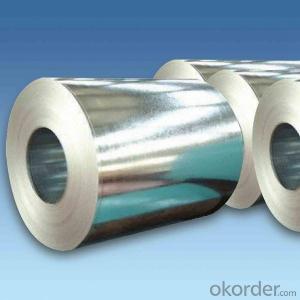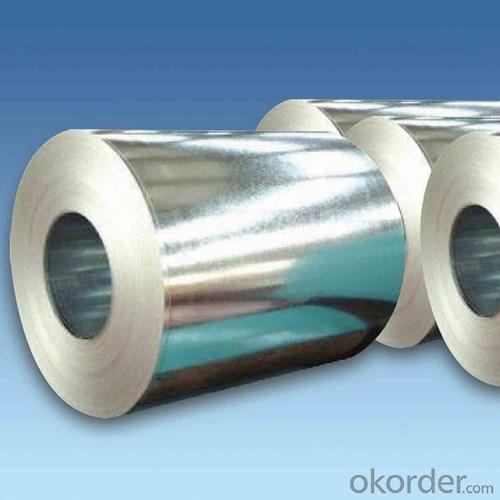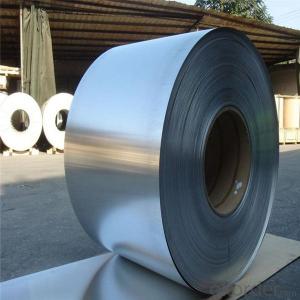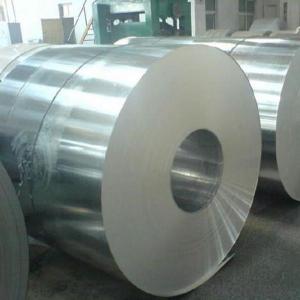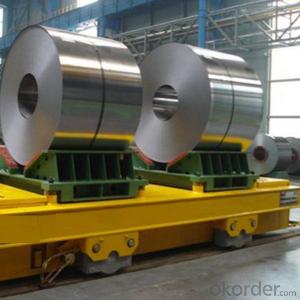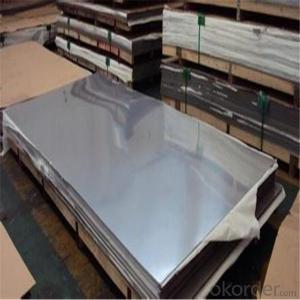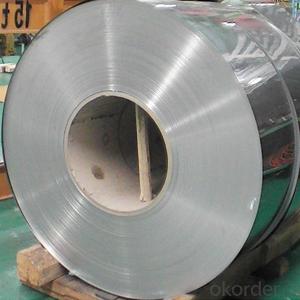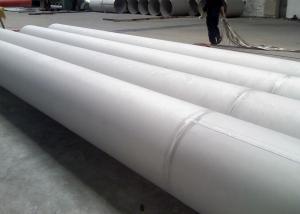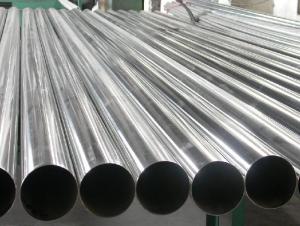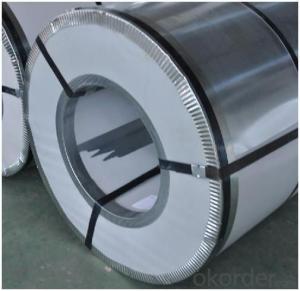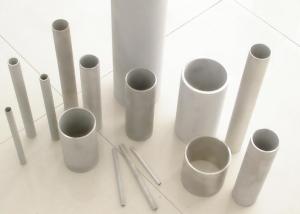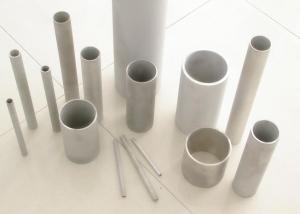Stainless Steel In Cold Rolled 304 NO.2B Finish Made In China
- Loading Port:
- Tianjin
- Payment Terms:
- TT OR LC
- Min Order Qty:
- 20 m.t.
- Supply Capability:
- 1000 m.t./month
OKorder Service Pledge
OKorder Financial Service
You Might Also Like
Specification
Products Description for Stainless Steel Coils/Sheets:
Material | 201/202/301/304/304L/310S/316/316L/321/410/420 |
Technique | old Rolled, Cold Drawn, Hot Rolled |
Standard | ASTM,AISI,JIS,GB,DIN,EN |
Thickness | 0.3mm-100mm or as your requirement |
Width | 100mm-3000mm or as your requirement |
Length | 1000mm-10000mm or as your requirement |
Surface Treatment | BA,2B,No.1,No.4,No.8,HL,8K,Brush |
Packing | 1.Export sea worthy package + water proof paper + wooden pallet 2. Max Loading 26.5mt for each 20Gp container 3.Safe loading and fixing Professiona teams 4. Professional shipping line |
Delivery | 5 days after received the 30% deposit of T/T or L/C |
Payment | T/T,30%payment in advance,70%T/T after the copy of B/L or L/c at sight |
Application | Stainless Steel Sheets are widely used in below fields: 1: Construction field, shipping building industry 2: Petroleum and Chemical Industries 3: Food and Mechanical Industries |
Features of Stainless Steel Coils
(1)Good ductility
(2)Good corrosion resistance
(3)Excellent abrasion resistance and fatigue strength
(4)Good weldability
(5)Oxidation resistant performance
(6)Excellent in high temperature
Payment&Delivery for Stainless Steel Coils/Sheets:
Payment Terms | 100% LC at sight,or 30%TT in advance, balance against B/L copy |
Delivery Time | With 30-40 days after deposit |
Price Terms | Ex-Work, FOB, CNF, CFR, CIF,etc |
Application of Stainless Steel Coils

(1)Boiler heat exchanger,
(2)Chemical industries,
(3)Hardware fields,
(4)Construction material,
(5)Kitchen utensils,
(6)Building construction,
(7)Medical equipment,
(8)Chemical tank,
(9)Pipe etc
FAQ for Stainless Steel Coils/Sheets:
Q:What are the advantages of your company ?
A: We have many professionals, technical personnel, more competitive prices and best after-dales service than other stainless steel companies.
Q:Can you arrange the shipment ?
A: Sure we can help you with the shipment. We have forwarders who have cooperated with us for many years.
- Q: What are the different types of stainless steel sheet surface treatments available?
- There are several different types of stainless steel sheet surface treatments available, each offering unique benefits and appearances. Some of the most common surface treatments include: 1. No.1 Finish: This is a hot-rolled, annealed, and pickled surface finish that is commonly used for industrial applications. It has a rough texture with visible grain lines. 2. No.2B Finish: Also known as a bright, cold-rolled finish, it is obtained by annealing and pickling. It provides a smooth and reflective surface with a moderate level of gloss. 3. No.3 Finish: This is a finely polished surface obtained by using gradually finer abrasive materials. It has a semi-reflective appearance and is often used for decorative applications. 4. No.4 Finish: Similar to No.3 finish, but with a higher level of polish. It has a satin-like appearance and is commonly used in architectural and kitchen equipment applications. 5. BA (Bright Annealed) Finish: This is a mirror-like, highly reflective finish achieved by annealing the stainless steel sheet in a controlled atmosphere. It is commonly used for decorative purposes and in the production of household appliances. 6. Embossed Finish: This treatment involves stamping the stainless steel sheet with a pattern to create a textured surface. It is often used for decorative purposes or to provide grip on surfaces. 7. Colored Finish: Stainless steel sheets can also be treated with different colored coatings, such as gold, black, or bronze. These finishes are achieved through processes like PVD (Physical Vapor Deposition) or electroplating. Each surface treatment offers its own advantages and is suitable for specific applications. It is important to consider factors such as durability, corrosion resistance, aesthetic appeal, and intended use when selecting the appropriate surface treatment for a stainless steel sheet.
- Q: What are the factors to consider when selecting the right grade of stainless steel sheet?
- There are several considerations to keep in mind when choosing the appropriate grade of stainless steel sheet. Firstly, it is crucial to understand the intended application of the sheet. Different grades of stainless steel offer varying levels of corrosion resistance, strength, and temperature resistance. Therefore, it is important to assess the specific requirements of the application, such as exposure to corrosive environments or high temperatures. Additionally, the desired appearance and finish of the sheet should be taken into account. Some grades of stainless steel are more suitable for achieving a polished or mirror-like finish, while others are better suited for a brushed or matte appearance. Certain grades may also be more resistant to scratching or showing fingerprints, which is important in applications where aesthetics are a priority. Cost is another significant factor to consider. Prices for different grades of stainless steel can vary significantly, depending on factors such as the alloying elements used and the manufacturing process. It is essential to strike a balance between the desired properties and performance of the sheet and the available budget. The ease of fabrication and welding is also a critical factor. Some grades of stainless steel are more easily machinable and formable, making them better suited for certain fabrication processes. Similarly, certain grades have better weldability, which is important in applications where welding is required. Lastly, the availability and sourcing of the selected grade should be considered. Certain grades of stainless steel may be more readily available in specific regions or from certain suppliers. Ensuring that the selected grade can be easily sourced is important to avoid delays or increased costs in the supply chain. In conclusion, when choosing the appropriate grade of stainless steel sheet, careful consideration should be given to factors such as the intended application, desired appearance, cost, ease of fabrication and welding, and availability. By evaluating these factors, one can make an informed decision and select the most suitable grade of stainless steel sheet for their specific requirements.
- Q: Are stainless steel sheets heat resistant?
- Indeed, stainless steel sheets exhibit exceptional resistance to heat. Renowned for their ability to withstand high temperatures and corrosion, stainless steel sheets are highly suitable for a wide range of applications. They maintain their structural integrity even under intense heat, without warping, melting, or compromising their integrity. This remarkable heat resistance can be attributed to the presence of chromium in stainless steel, which forms a protective oxide layer on the surface, preventing oxidation and preserving its strength at elevated temperatures. Consequently, stainless steel sheets are extensively utilized in vital industries like manufacturing, construction, automotive, and food processing, where the ability to withstand heat is paramount.
- Q: Are stainless steel sheets suitable for welding or fabrication?
- Certainly, stainless steel sheets prove to be a fitting choice when it comes to welding and fabrication purposes. The weldability of stainless steel is truly exceptional, enabling it to readily merge through an array of welding techniques like TIG (Tungsten Inert Gas) or MIG (Metal Inert Gas) welding. Moreover, its formability is commendable, granting it the ability to be effortlessly molded and fabricated into diverse structures or components. Furthermore, stainless steel sheets exhibit remarkable strength and resistance against corrosion, thereby winning favor in industries encompassing construction, automotive, and manufacturing. All in all, stainless steel sheets establish themselves as a versatile and dependable material for applications pertaining to welding and fabrication.
- Q: Can stainless steel sheets be used for food packaging?
- Yes, stainless steel sheets can be used for food packaging. Stainless steel is a durable and non-reactive material that does not impart any taste or odor to the food. Additionally, it provides excellent protection against moisture, oxygen, and contaminants, making it suitable for food packaging applications.
- Q: What are the benefits of using mirror-finish stainless steel sheets?
- Mirror-finish stainless steel sheets offer several benefits. Firstly, they provide a sleek and modern aesthetic appeal, making them a popular choice for interior and architectural design. Additionally, the reflective surface of these sheets creates the illusion of a larger space, making them ideal for small areas. Mirror-finish stainless steel also has superior corrosion resistance, making it a durable option for outdoor applications. The smooth surface is easy to clean and maintain, reducing the need for frequent upkeep. Finally, mirror-finish stainless steel sheets are often used in food processing and medical industries due to their hygienic properties and ability to resist bacterial growth.
- Q: What are the different types of textured patterns available for stainless steel sheets?
- There are several types of textured patterns available for stainless steel sheets, including diamond, quilted, linen, and checkerplate patterns.
- Q: What is the area of stainless steel plate?
- For example, a steel coil with known weight, thickness, length, width, and price, you can work out the cost price of each meter, and then you can set the price as you expect it
- Q: Stainless steel thermos cup 304 and 201 material what is the difference?
- 304 stainless steel toughness better: 201 stainless steel material is relatively hard, with a little steel, relatively easy to crack. The 304 stainless steel insulation Cup because it contains nickel, it is not rusty, and 304 stainless steel more toughness, fatigue resistance is much better than 201.
- Q: What are the different types of embossed finishes available for stainless steel sheets?
- There are several types of embossed finishes available for stainless steel sheets, including diamond, quilted, linen, and leather grain patterns. Each finish offers a unique texture and aesthetic appeal, allowing for various design options in different applications.
Send your message to us
Stainless Steel In Cold Rolled 304 NO.2B Finish Made In China
- Loading Port:
- Tianjin
- Payment Terms:
- TT OR LC
- Min Order Qty:
- 20 m.t.
- Supply Capability:
- 1000 m.t./month
OKorder Service Pledge
OKorder Financial Service
Similar products
Hot products
Hot Searches
Related keywords
